Richard Barnes, one of our dear Australian Purusha, is in the process of building his second Maharishi Vastu home. The main storey of the home is made of logs crafted in Estonia. Here is a recent letter from him and photos showing the logs being assembled on site;
"Last Friday the house arrived from Estonia to the building site in Narooma, NSW
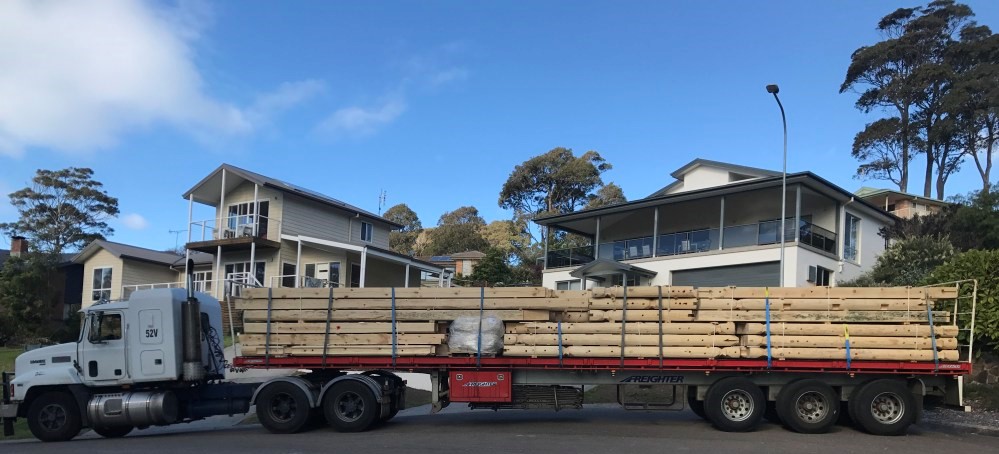
.It was held up in customs for a few days due to mould in the unventilated containers. Because of this we were behind schedule so I hired a local who was keen to see how log cabins are done--he joined the 4 builders from Estonia and, most importantly, brought his tools. They did a 5-day job in three days.
The days were warm and sunny--no rain.
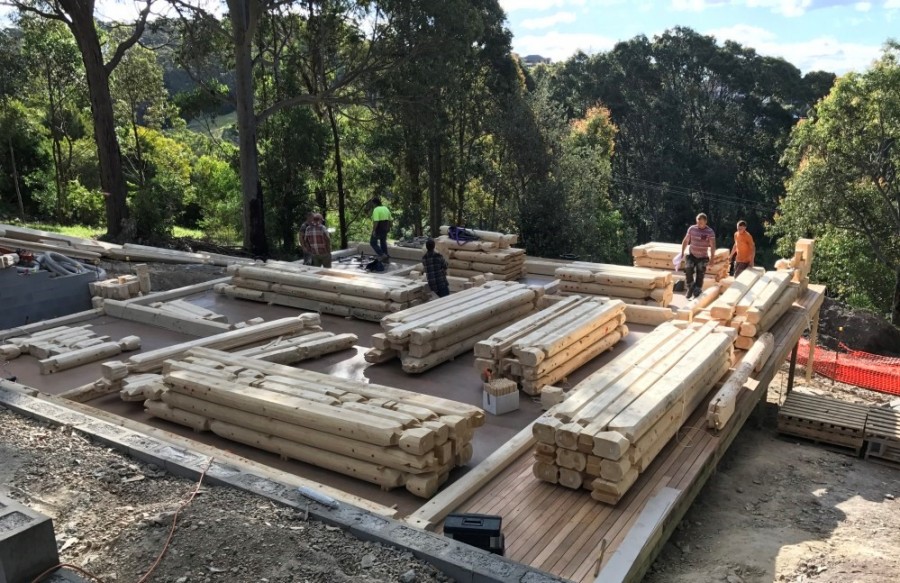
The house grew quickly with the help of a crane and very cooperative operators. They were all so happy under pressure, and focussed. They worked Friday, Saturday, and, all finished and cleaned up by Sunday arvo (we were not supposed to work on Sunday as it may disturb neighbours so they were careful in the early morning and no-one complained--in fact the neighbours were very supportive and interested). I shook hands with the builders and they drove straight to Sydney to catch their flight and I was left alone to enjoy the quiet of the new house.
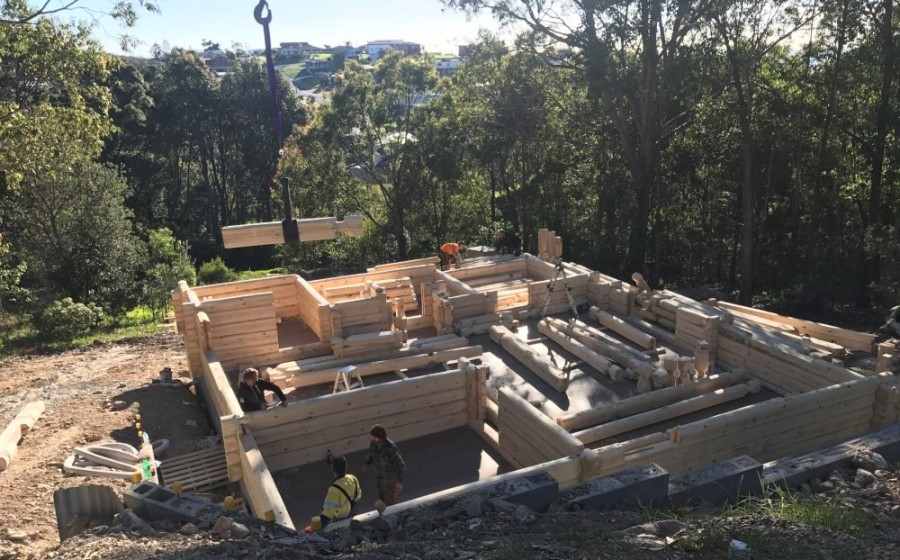
I loved the photos of the house when originally built in the shed in Estonia but to be up close and in its presence is something else--like the difference between seeing a video of Maharishi and actually being in the same room getting his full darshan.
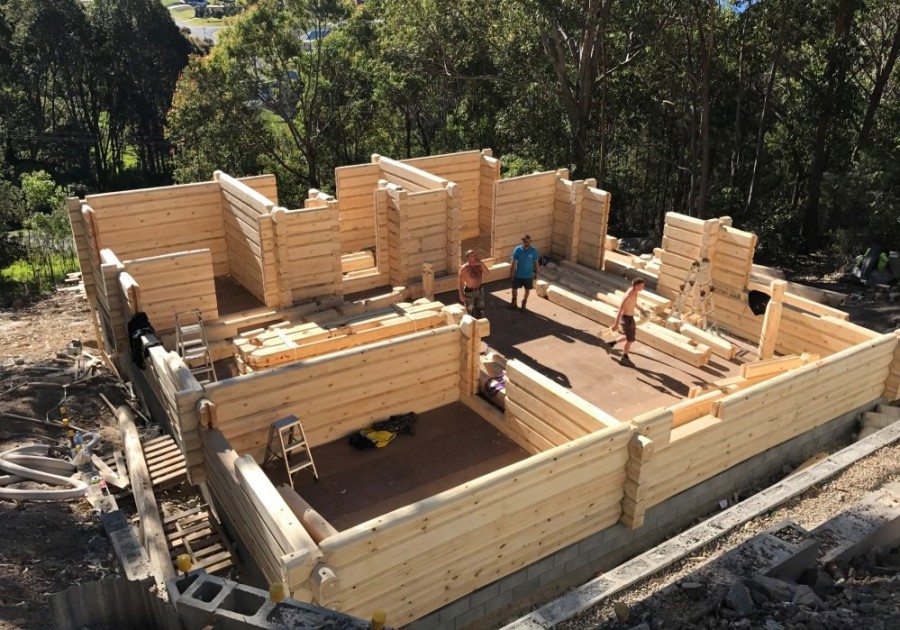
Each log has a complex notch at each end which is 'carved' by hand, with a small chainsaw. And right along the length of the log there is a tongue and groove top and bottom. Each log is placed with the crane and knocked into place with a sledge hammer. It fits unbelievably well given the length and irregular shape of each log. They cut the notches 2mm bigger to allow for some initial all-round shrinkage (the logs are kiln dried) and then the fit is perfect and tight. This precision of measurement is important when building according to vastu.
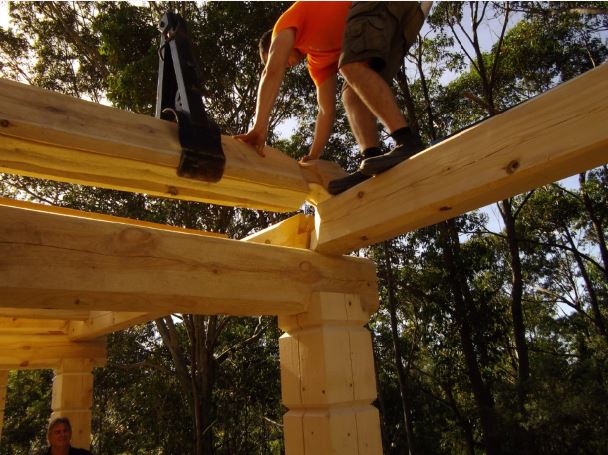
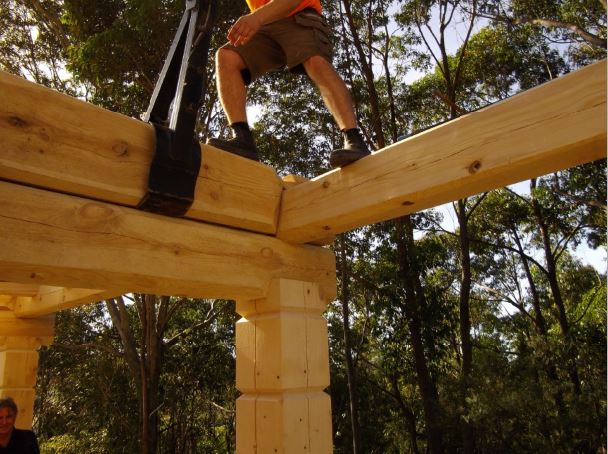
Then hundreds of wooden pegs about 45cms longs are hammered into pre-drilled holes going vertically through the log and the one below--this lines the logs up perfectly. Also long steel bolts tie the bottom logs to the foundations and, when the wall is finished, very long bolts go vertically from top to bottom on the four corners. There is a strip of insulation between each log to seal it airtight (in the pioneer days they used moss from the forest or a leather strip).
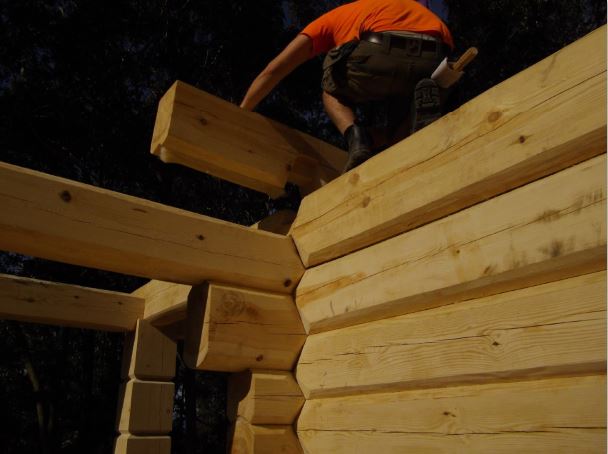
The builders all had round bullish shoulders (from years of handling logs) and the balance of monkeys walking around 5m up on a log without a second thought. No hard hats.
The house will shrink and settle by 7cms over 2-3 years. I am told to expect some creaking sounds (like the timbers in an old ship) as it settles. This means all the windows and doors etc. must accommodate this shrinkage--they allow space for it to shrink and have a cap over the windows covered by the architraves--there is a groove along the sides to allow the shrinkage (logs only shrink widthways--the length remains the same).

Logs this big have a very good fire rating--almost as good as bricks--if a bushfire passed through (I am not in a bushfire zone) the logs would not catch fire like weather-boards but only char on the outside.
In the photo of me leaning against the veranda post you see the big screw at the bottom--this is another way to allow for shrinkage--as the house settles I adjust that screw until eventually the post rests on the floor. Until then we will build a little box to hide the screw.
It is very simple and ingenious and a joy to be able to see and appreciate how it is all connected and constructed.
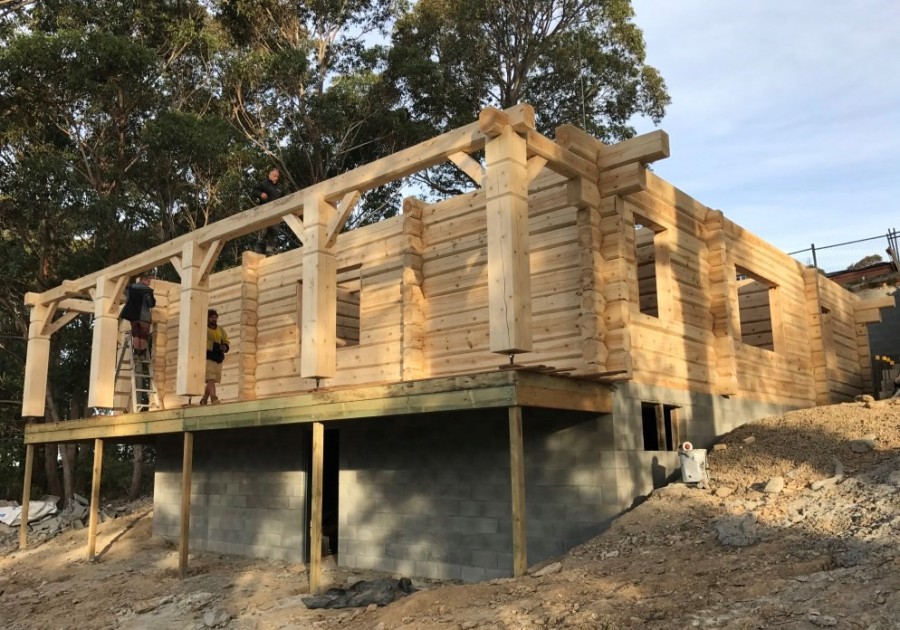
I did an online owner-builder course which allowed me to be on site and help during the middle part of the day--I did the things which did not require special experience like hammering in wooden pegs (very satisfying) and keeping the building site tidy, fetching tools from the hardware shop as needed (2 staple guns broke and one sledge hammer). The builders were so engaged they did not think of food so I got hot, fast, finger food which they wolfed down in 15 minutes and then straight back to work.
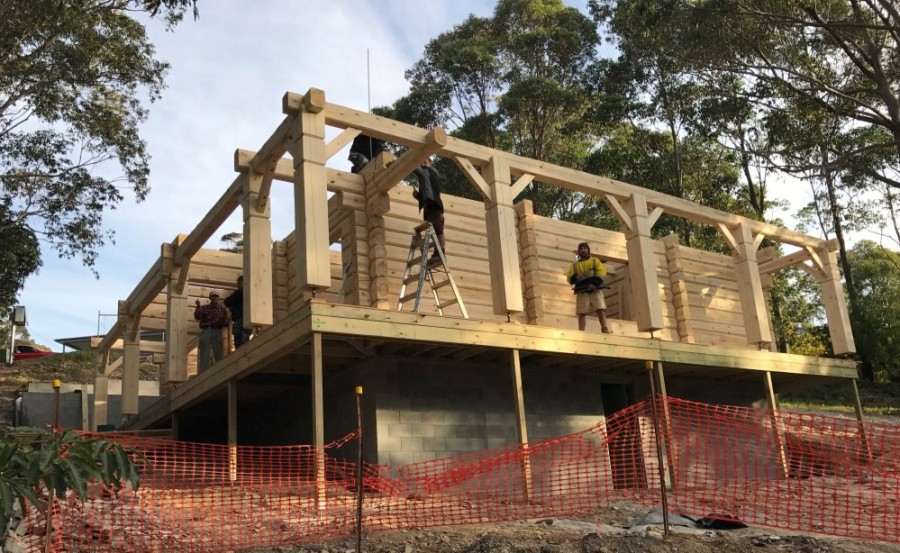
It is a very solid, heavy house--the footings, being dug into the hill, are 90% resting directly on the bedrock. The master bedroom is snuggled right into the deepest part of the excavation (after 'Wind in the Willows' I always wanted to sleep in a burrow or a cave)--the retaining walls in that corner are 3.5m high. Then the other side of the house is high, airy, and light. This affords space for a decent basement workshop/storage underneath.
There is a solid 1m veranda fence to be built between the veranda posts because I always liked the feeling of a fortress with secure battlements.
It was a joy to not have to say once, 'that is not right'. We had sorted it all out before it left the factory.
Jai Guru Dev
Richard"
